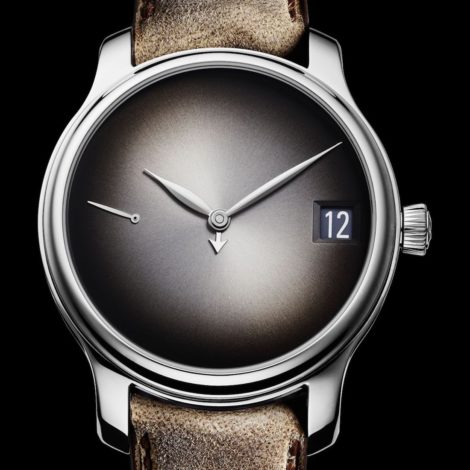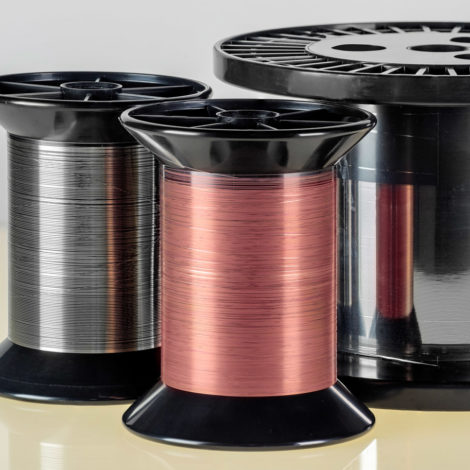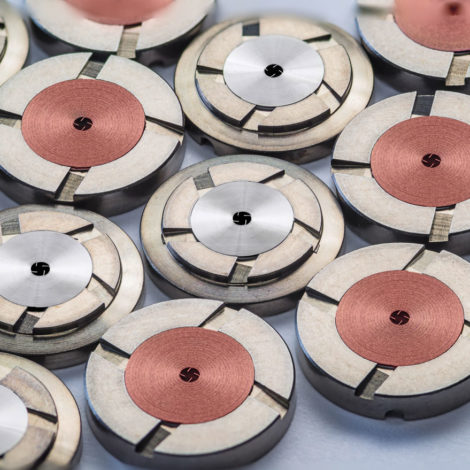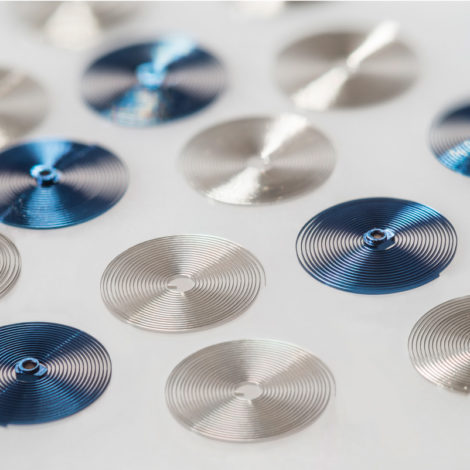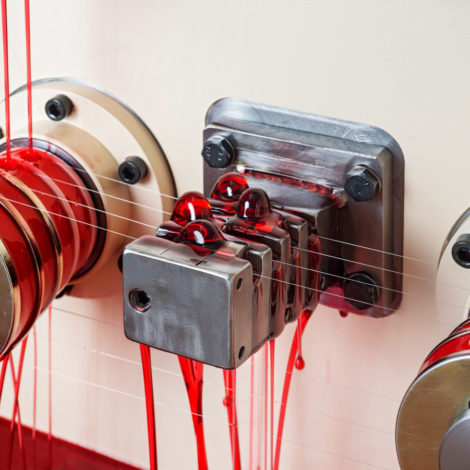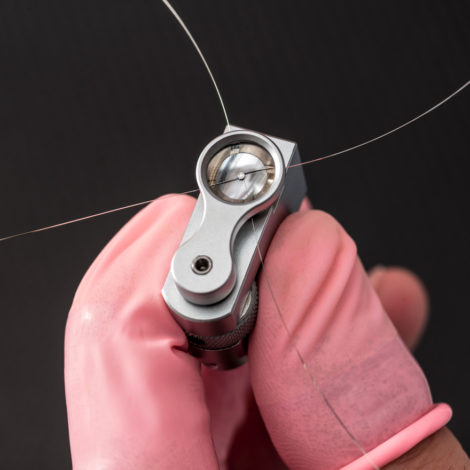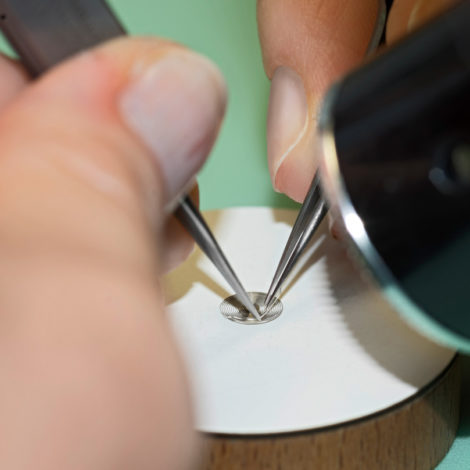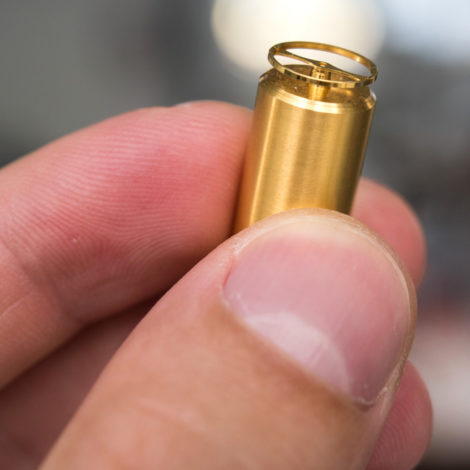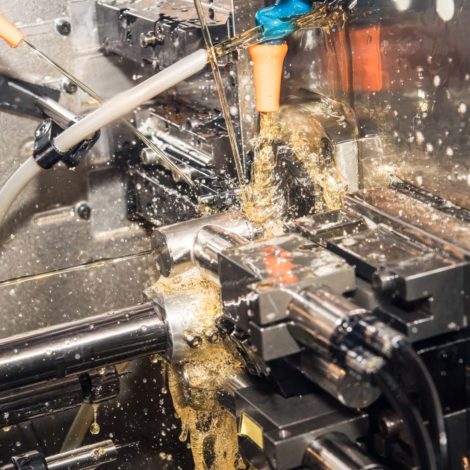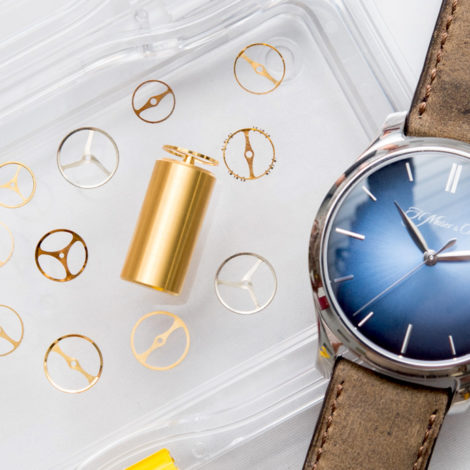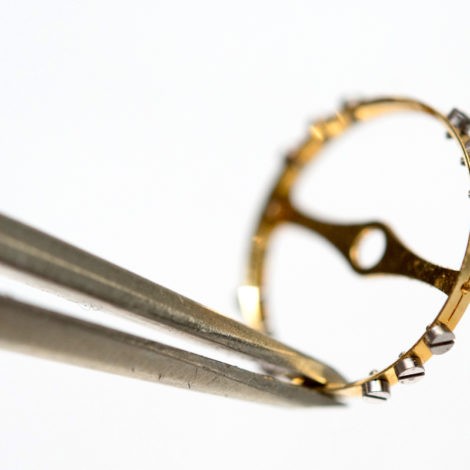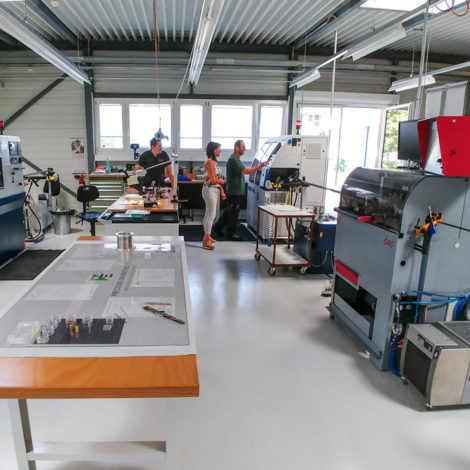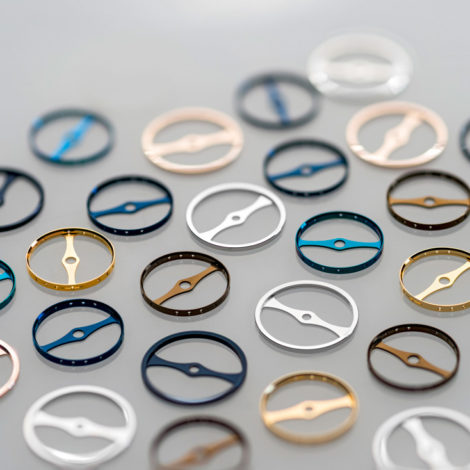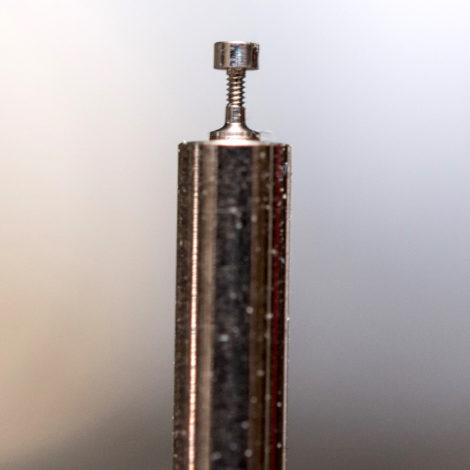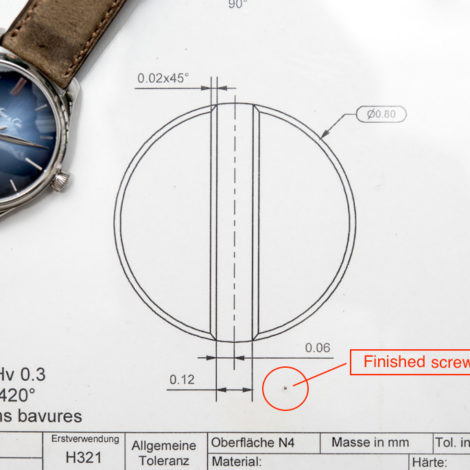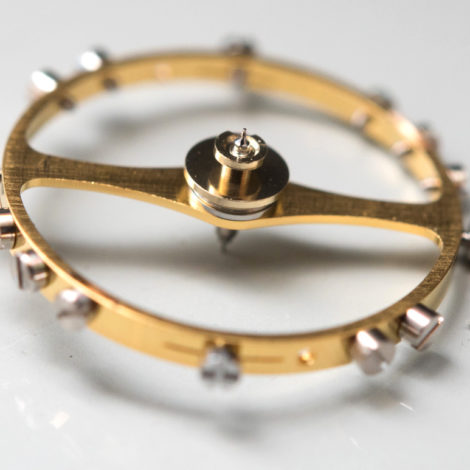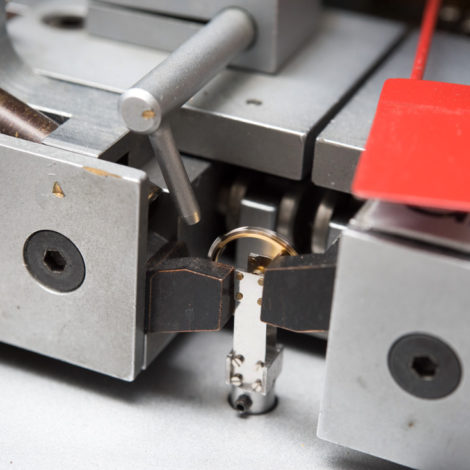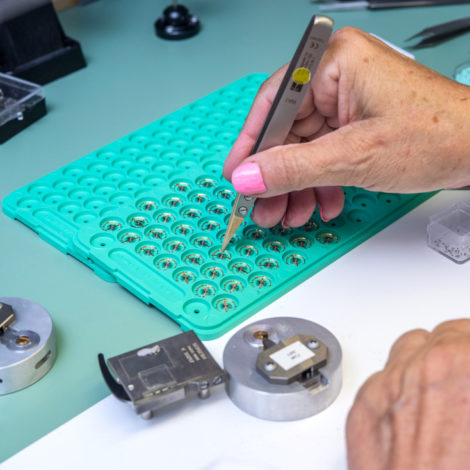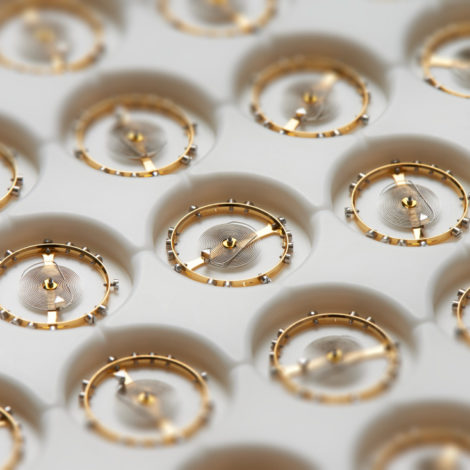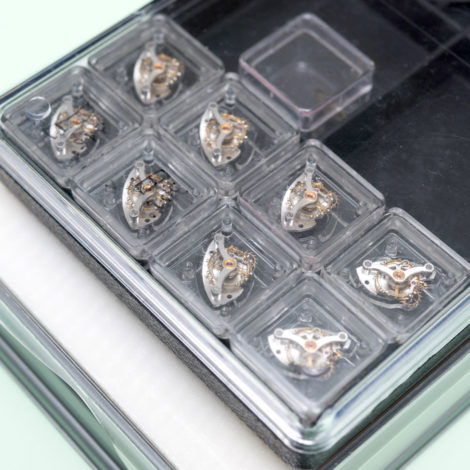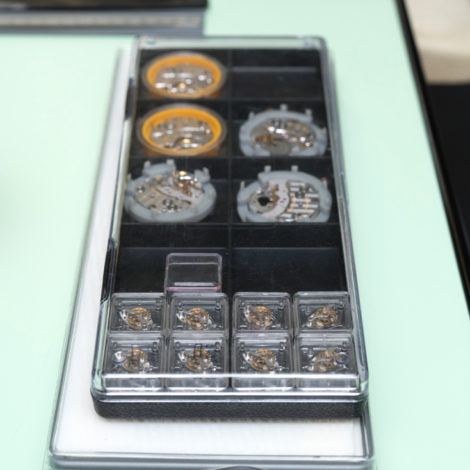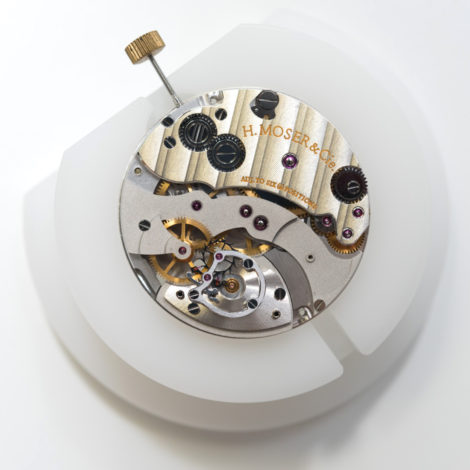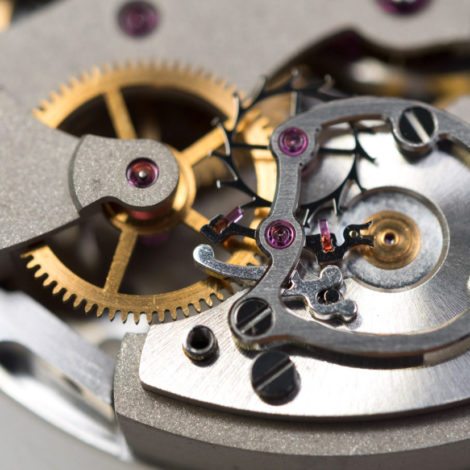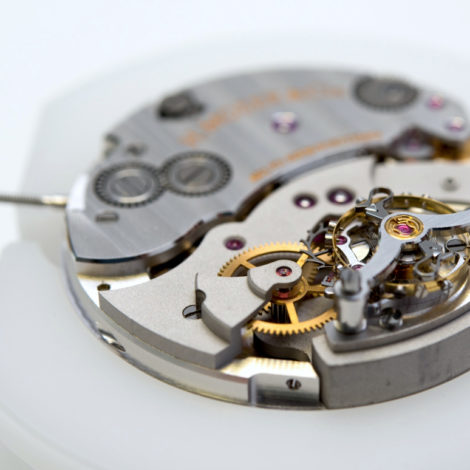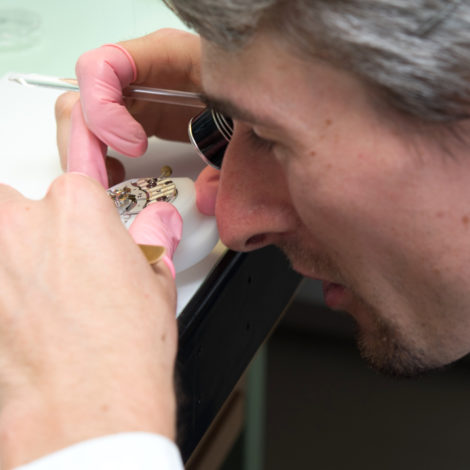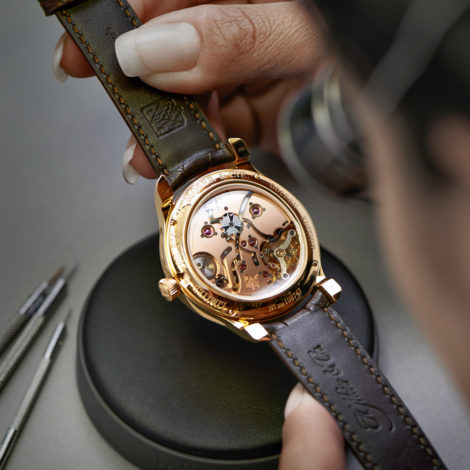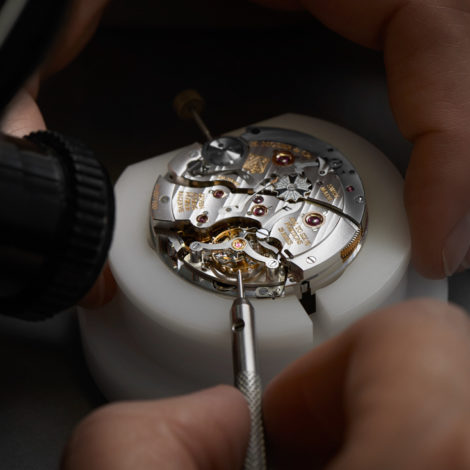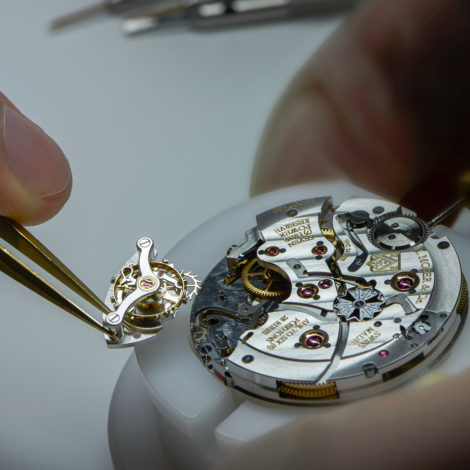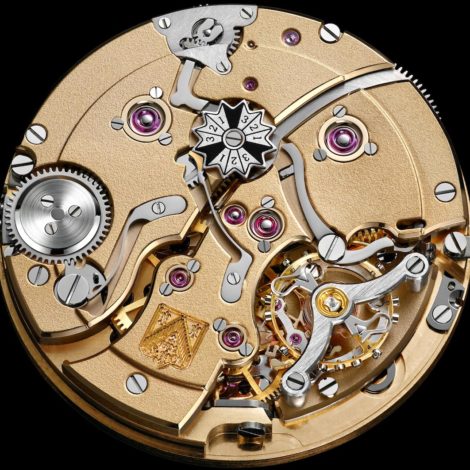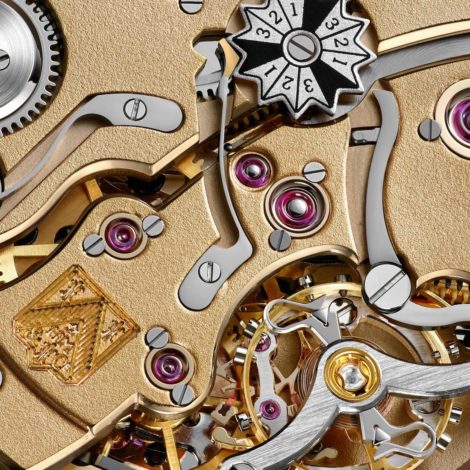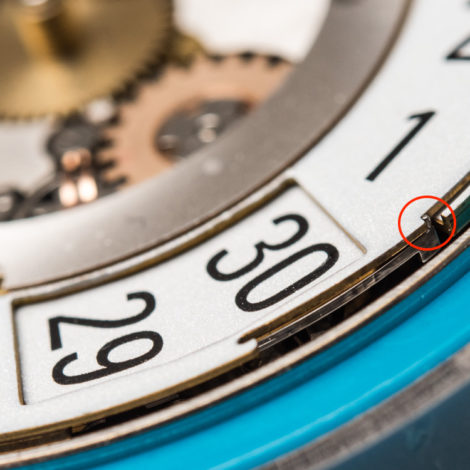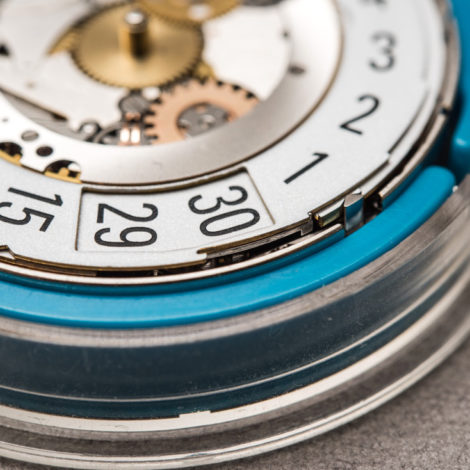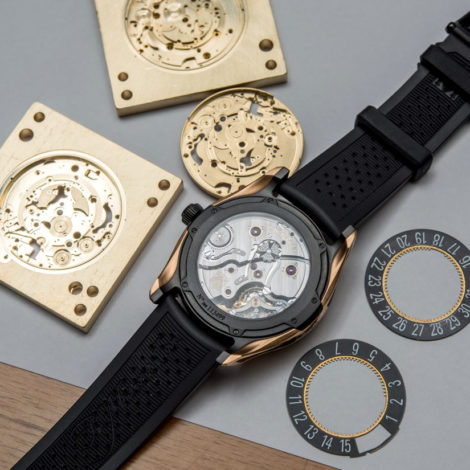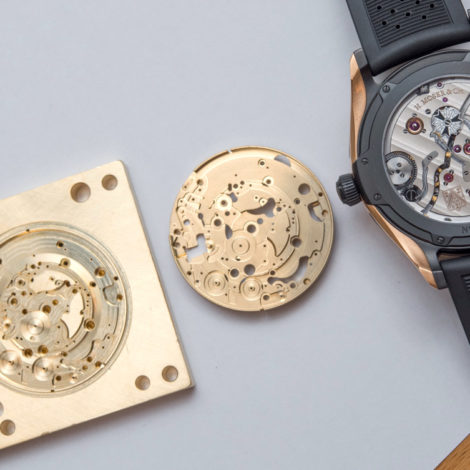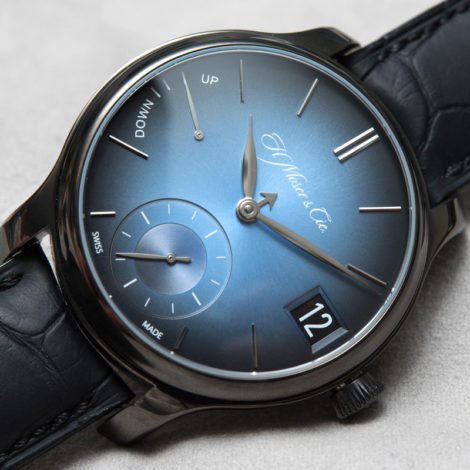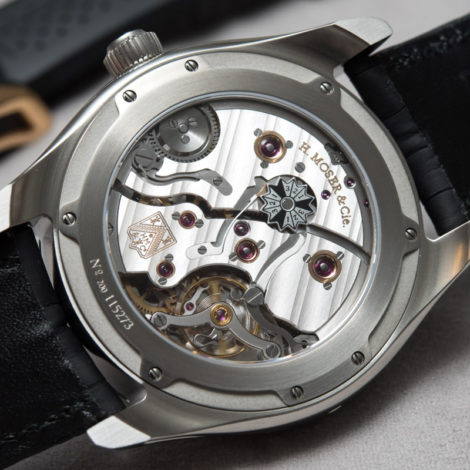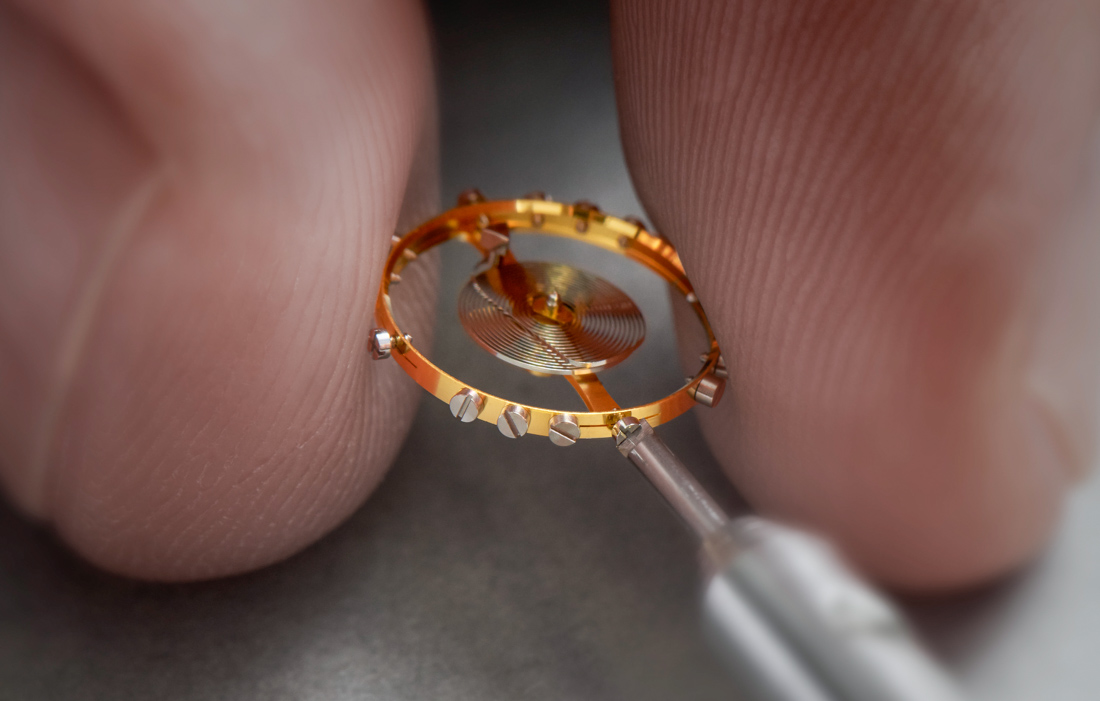
The matching process between balance wheel and balance spring can be done in one of two ways. What Moser does relies on randomly choosing a balance spring and then cutting it to a length that works best with the chosen balance wheel – meaning all springs will be of different lengths, which neither is an issue, nor is noticeable to the wearer, but rather a testament to the handcrafted, low production volume nature of an H. Moser & Cie. timepiece. In manufactures that work in much greater quantities, they usually cut springs to the same length and test and sort the balance wheels and the springs into groups, based on their attributes. Then, say, a group 5 balance wheel matched to a group 5 balance spring will make for an ideal match. In this instance all springs are the same but, for the aforementioned reasons, perform differently – which is why they need to be sorted and matched with balance wheels with the same attributes.
If all this sounds complicated, wait until this whole thing is installed in a modular escapement.
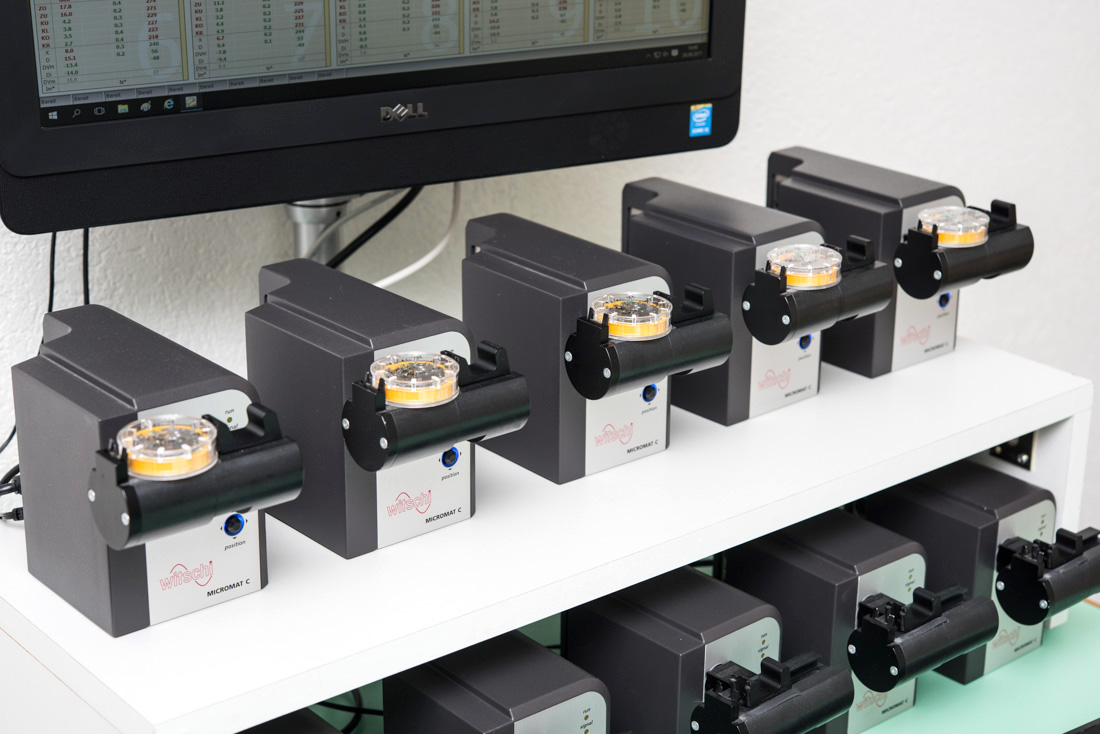

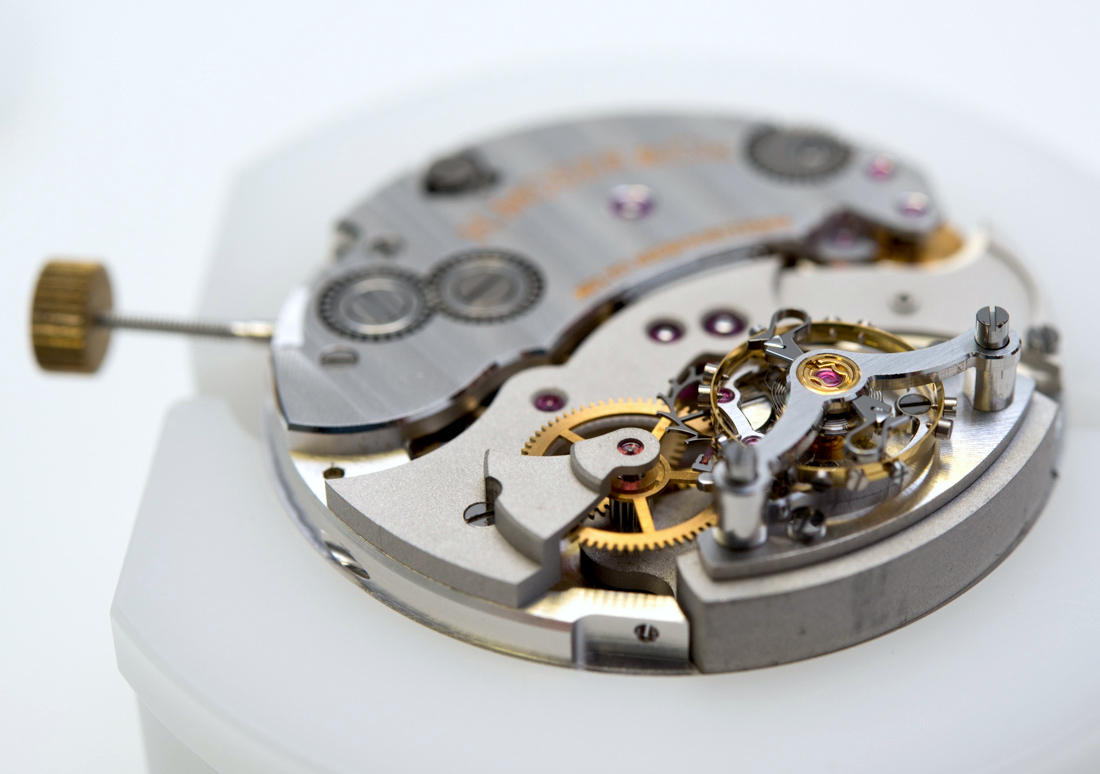
Once the modular escapement – composed of a plate, bridge, jewels, balance wheel and staff, balance spring, escape wheel, complete pallet fork and all other parts – is constructed, it is first fitted to a test movement, in which it is tested for 10 full days. This ensures the correct rate and functioning is set and tested for the escapement, before it can be fitted to an H. Moser & Cie. movement that will get cased up and leave the manufacture. The test movements are placed on Witschi machines at the end of every 24 hours to determine their rate and make further fine-tuning, if deemed necessary.


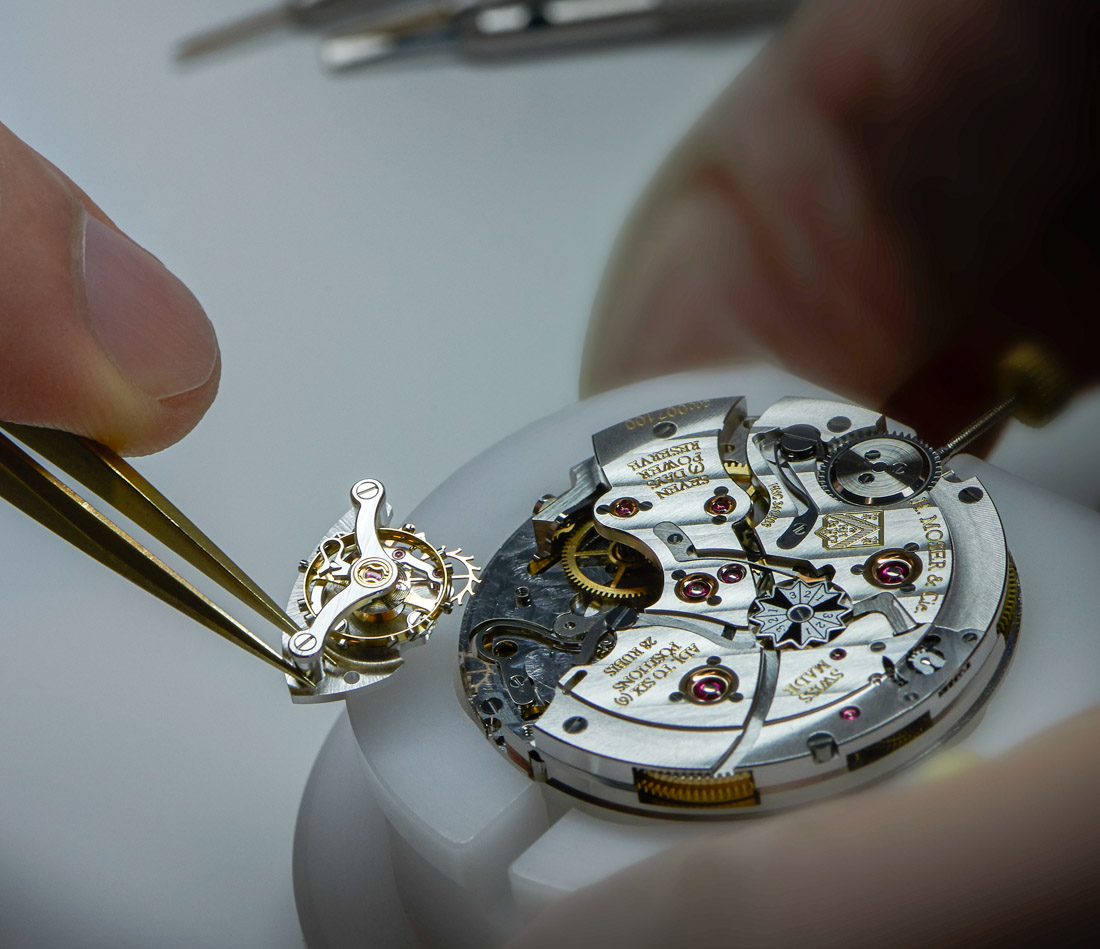
Once the ten days are over and the escapement passed the tests, it gets installed in a final movement, which spends another ten days running and tested at the end of every 24 hours. This means that each Moser interchangeable escapement module spends over 20 days ticking away in sealed boxes in the manufacture, checked at the end of every day, before it can be cased up, put through final quality control, and shipped to the new owner.
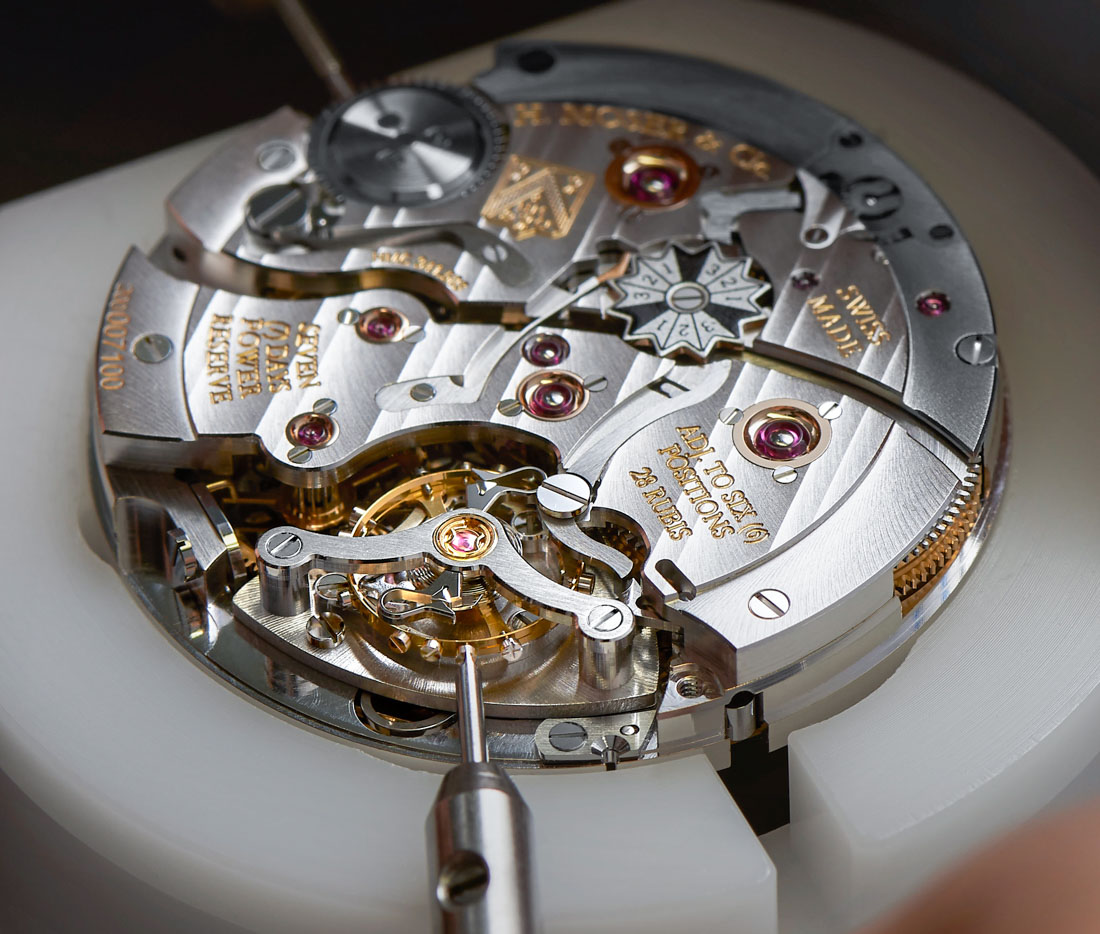
Making High-End Movements More Simple Without Affecting Quality Or Desirability
At this point it goes without saying that any high-end movement fitted to an H. Moser & Cie. watch is a true engineering feat that requires extremely rare and highly specialized know-how. Simple, even if equipped with just a time-only display, they clearly aren’t. This, however, hasn’t stopped the R&D team and the Meylan family from dedicating great efforts to making these movements as user- and watchmaker-friendly, as possible.
Probably the most telling achievement in this regard concerns H. Moser & Cie.’s unique perpetual calendar caliber. Before the Meylan family introduced their efforts to simplify some of the manufacturing processes, they say it took over 90 hours to assemble a perpetual calendar HMC 341 caliber in-house. Without changing the aesthetic or performance qualities of the movement, this was dropped to around 36 hours – a truly remarkable achievement in today’s age where minuscule increases in efficiency are the norm. All this is largely made possible thanks to all design as well as research and development being carried out on the premises of H. Moser & Cie. – beyond all the manufacturing processes we have looked at thus far, of course.
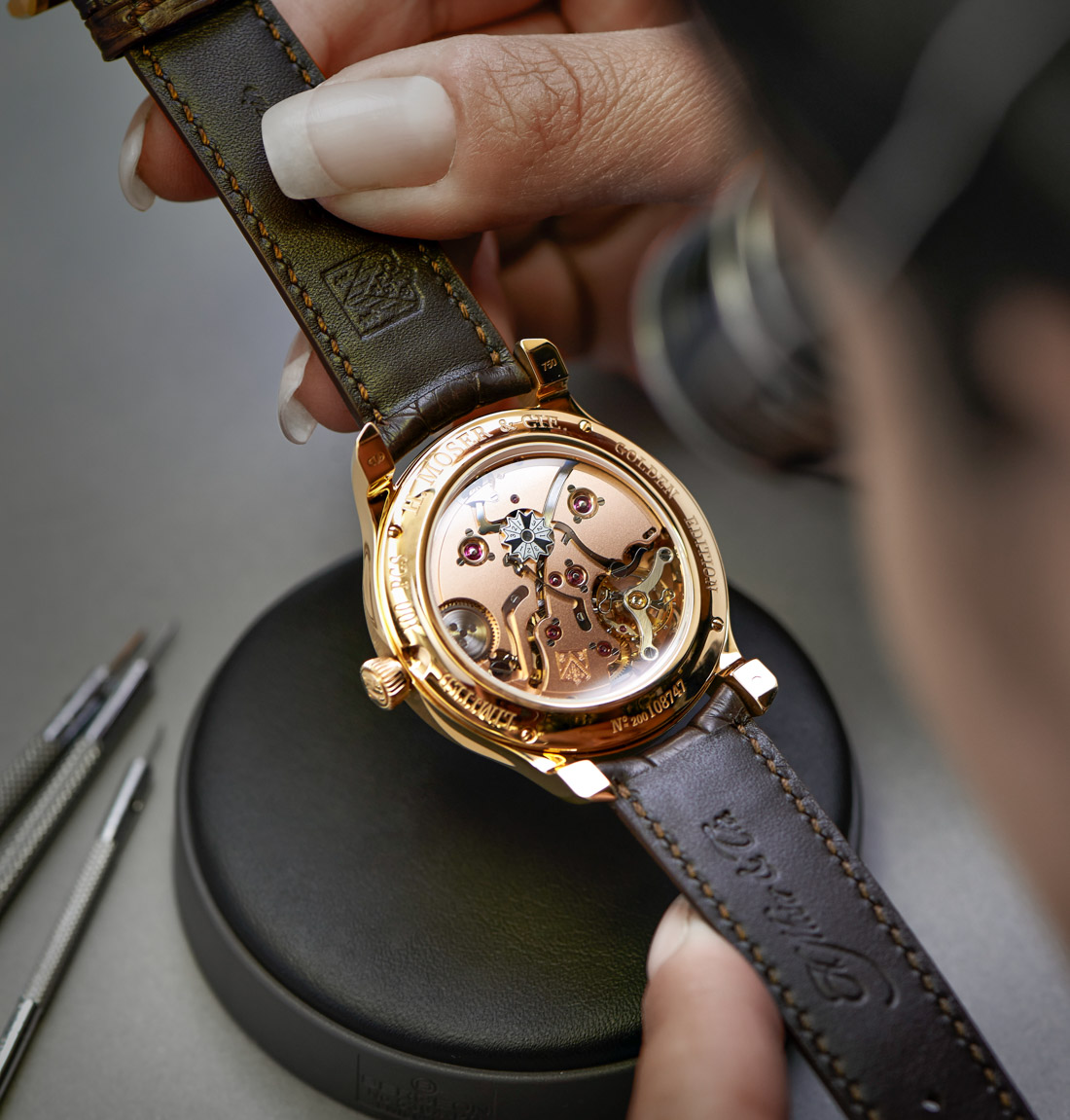
It remains important to stress how this has not affected the quality of the movements in any way – in fact, it made them easier and faster to service. By standardizing the assembly process which watchmakers at the manufacture have to follow, the perpetual calendar is now assembled by everyone in the same order. That is right, a movement as complicated as an instantaneously jumping, forwards and backwards adjustable, double-date disc, double barrel, central month indication perpetual calendar can in fact be assembled in a variety of ways – and while the end result always has to be a perfectly functioning watch in the hands of the customer, such delicate movements assembled in different ways can make the life of after-sales service incredibly more difficult. Simply to take apart such a movement, you should know how it was assembled.
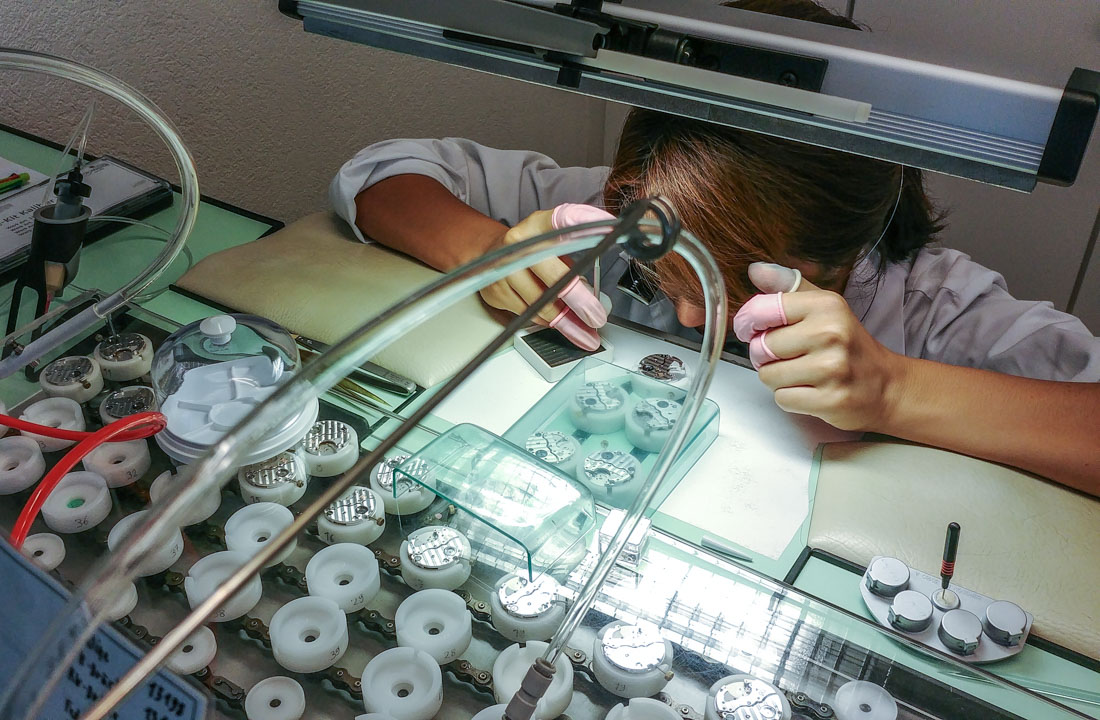
Further, the manufacture began testing and using a type of conveyor belt system – the whole system is in front of the same one watchmaker and it is designed to make his/her work easier and not to connect two or more work stations. The idea is that the watchmaker performs a set number of processes at one time on the movement and then has the next movement delivered to her – on complicated movements that require a wide variety of tools, parts, and lubricants this saves a lot of time, as she need not perform a range of processes, but do the same one again and again.

Once the belt makes a full round, she switches to the next task and performs those. In the end, it is still the same one trained watchmaker who performs all the tasks on the movements he/she is assigned, but does so in a way that is much more efficient and also less stressful and tiring.
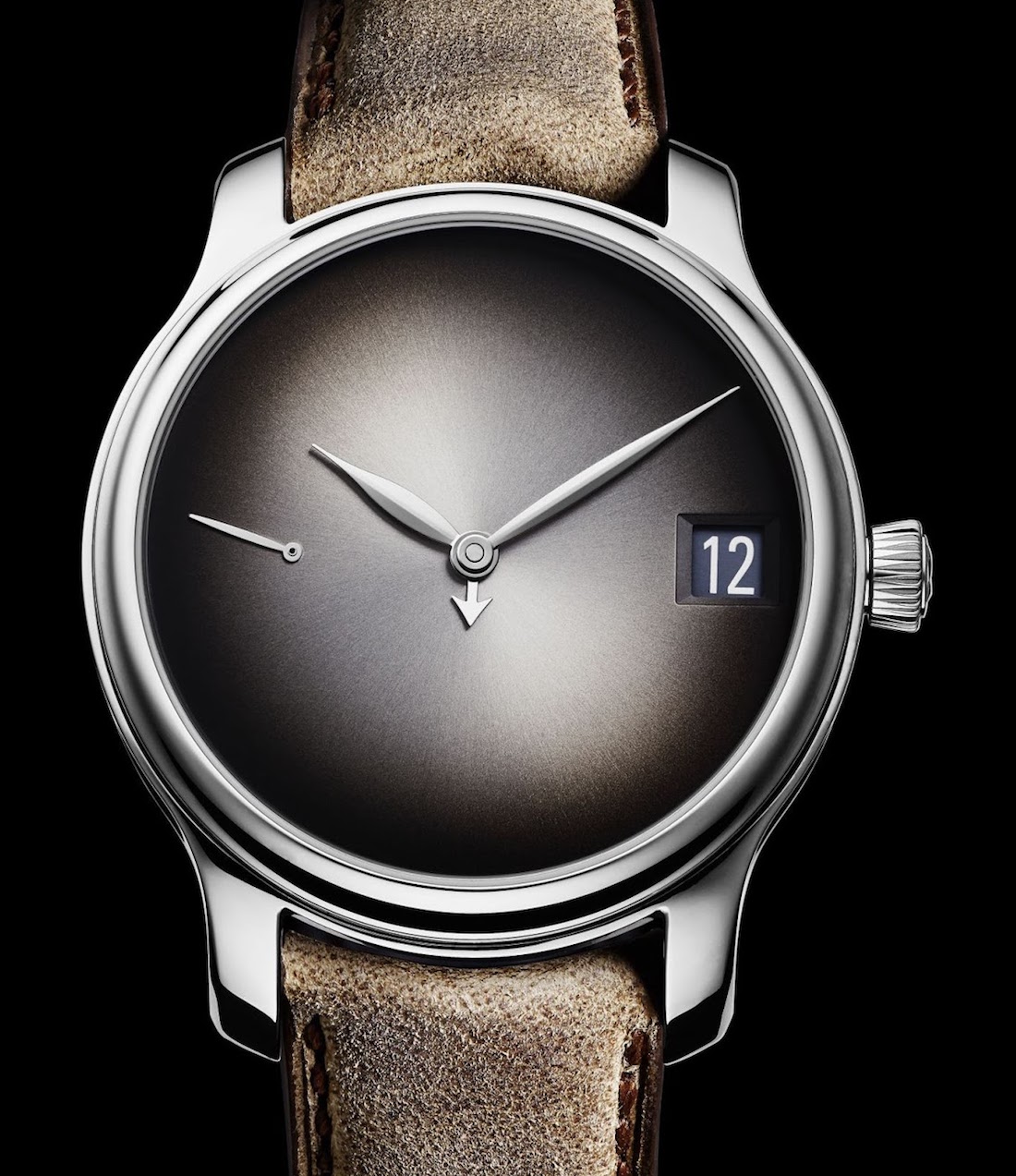
The H. Moser & Cie. Perpetual Calendar
Unquestionably one of the most unusual and instantly recognizable perpetual calendars belong to H. Moser & Cie., thanks to the remarkable simplicity it is capable of lending to the display. The technology wrapped into the HMC341 caliber goes well beyond the display of the days, months, leap years, and power reserve, but first, let us focus on the dial side of the Moser perpetual.

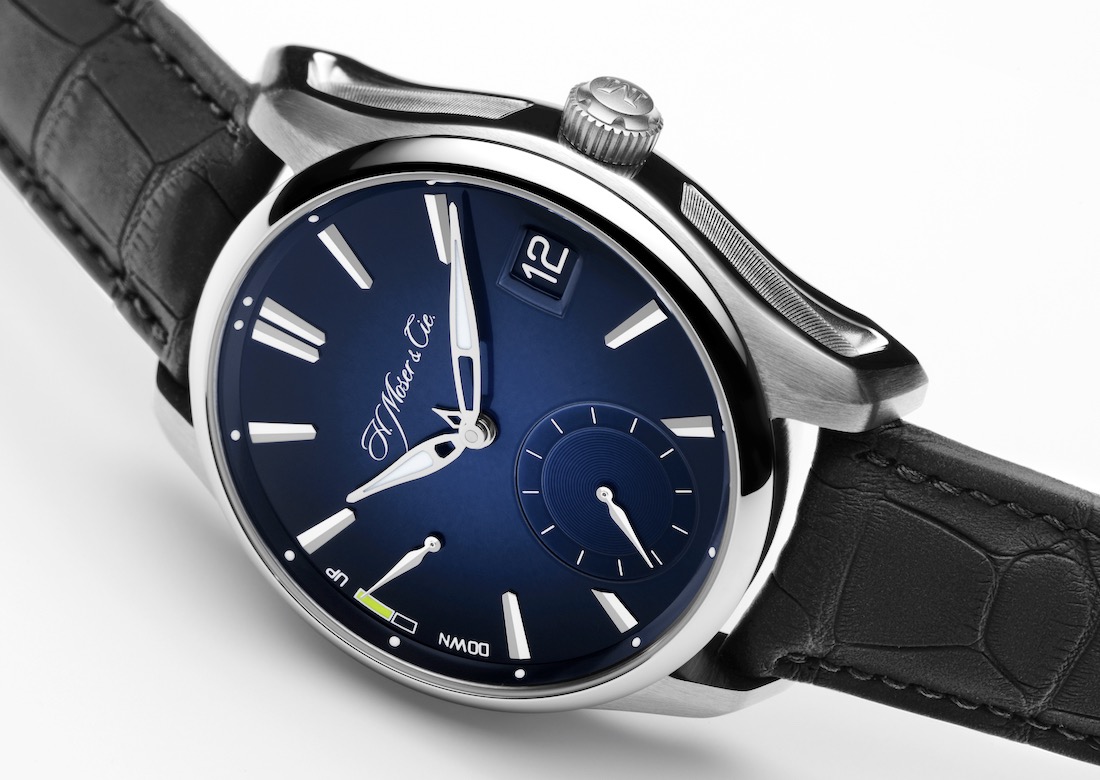
Available in the classic and typical Moser-style Endeavour, the new and sportier looking Pioneer, as well as the old-school and exceptionally detailed Heritage collections, the perpetual calendar we see adapts easily to a wide range of watch styles. In all instances, the instantaneous big date that jumps in a heartbeat at midnight is located at 3 o’clock, the month is indicated by a small arrow mounted right under the main hour and minute hands, the leap year – to further simplify the dial side – is on the caseback, while power reserve is at 9 o’clock. Running seconds can be found at 6 o’clock, but it isn’t a feature that is present on all Moser perpetual calendars – like the H. Moser & Cie. Endeavour Perpetual Calendar Concept seen above, that did away with all disposable elements on the dial.
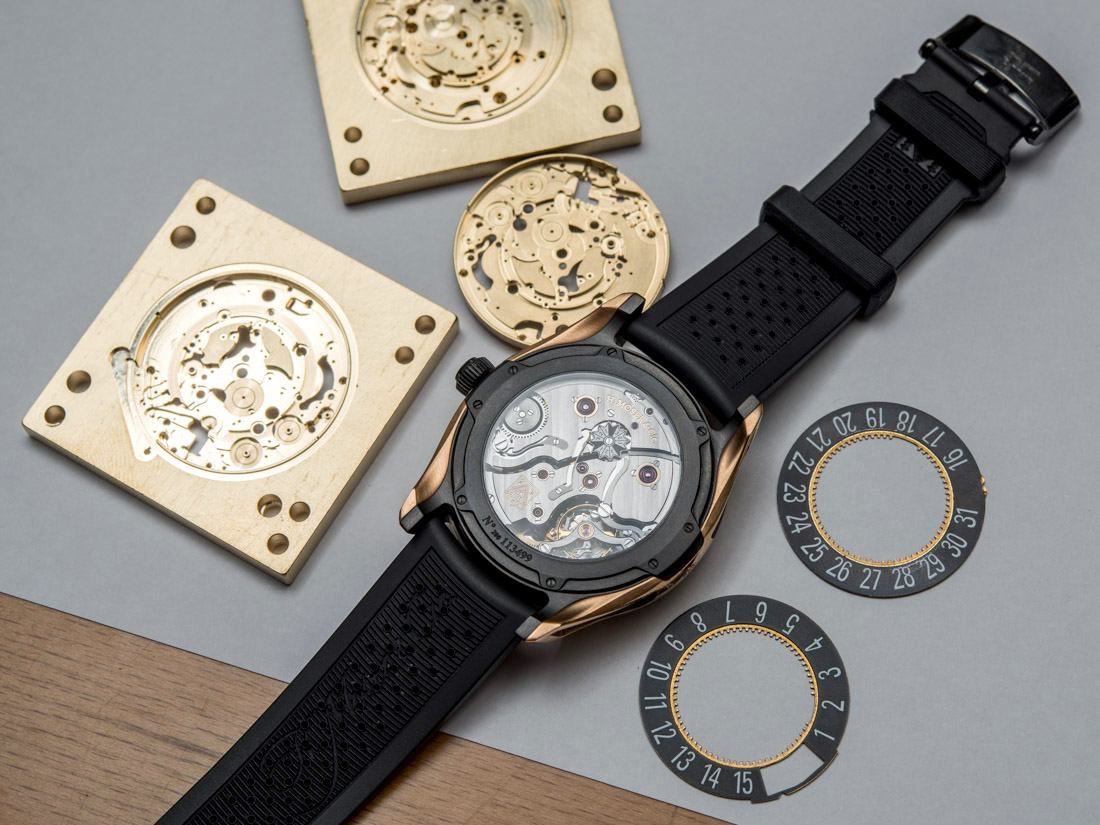


Anyone with a good eye for scale will soon realize how the date on the Perpetual Calendar is simply too big for it all to be printed on just one disc – and indeed, one of the largest date displays requires the clever configuration of two metal discs that rotate over each other. We have seen microscopic tolerances met in the Moser manufacture, and as such, it comes as no surprise that these date discs require equal attention to detail. First, keeping their thickness at a minimum is a major challenge and so both the machining and the painted surface must be done exactly right. Otherwise, the discs will get stuck and the date will fail to change.

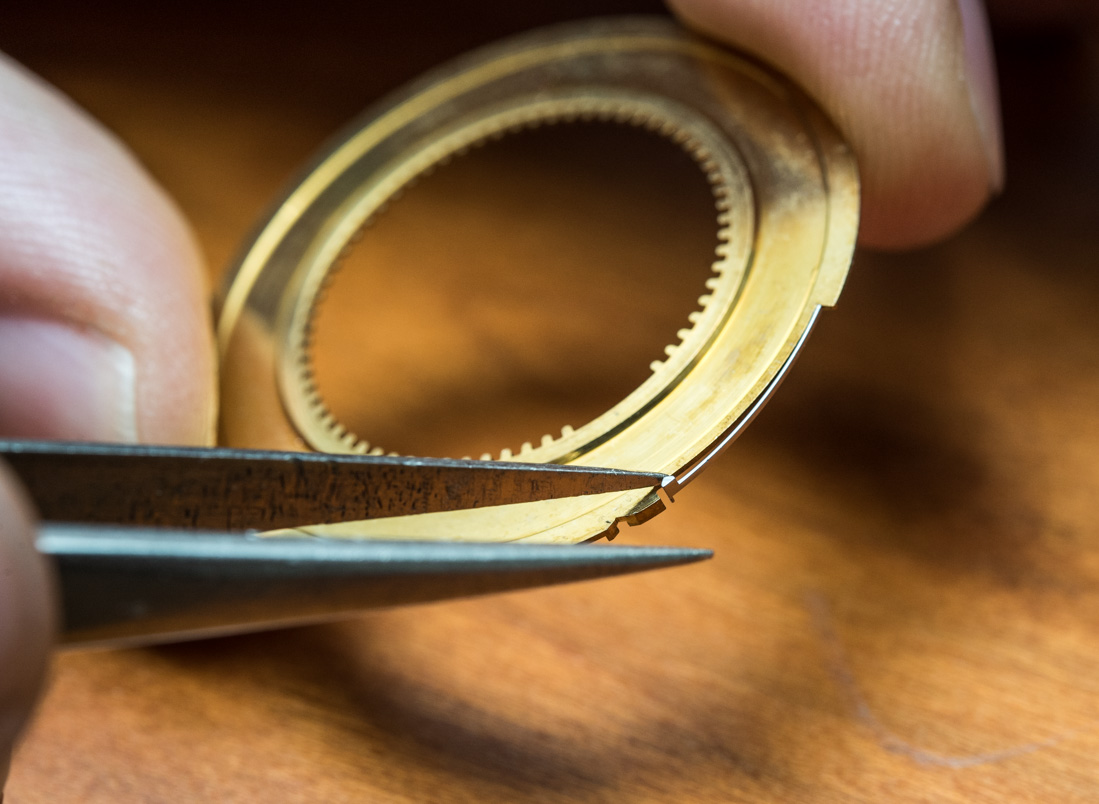
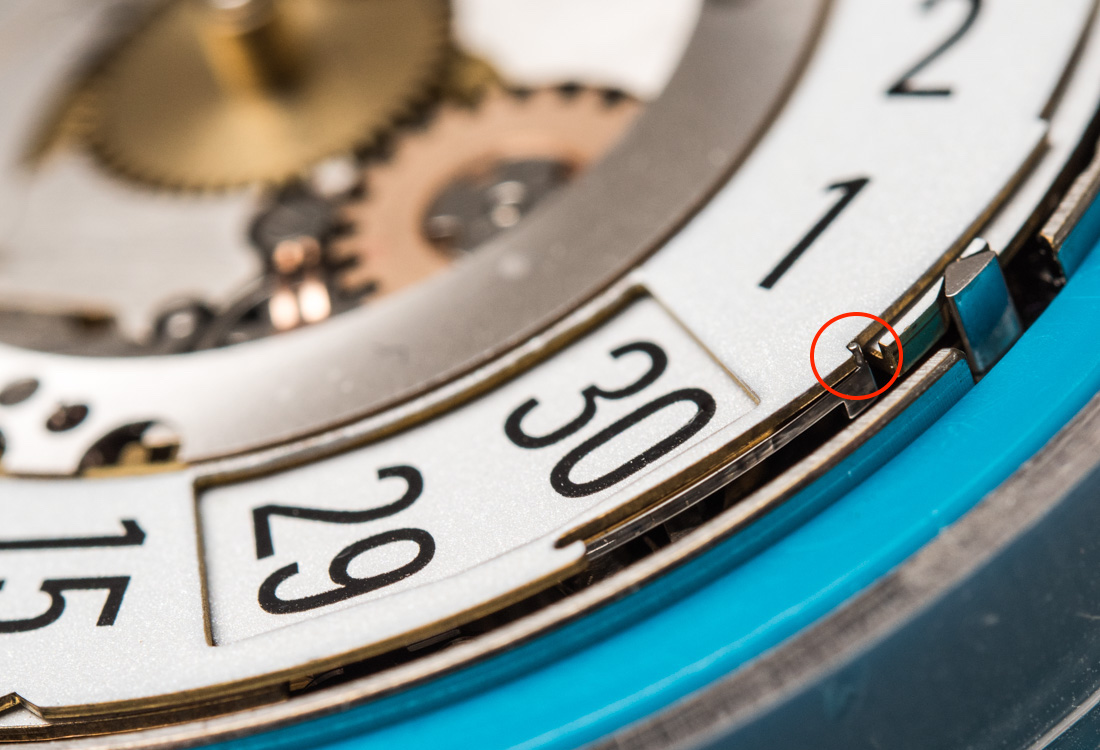
To be spotted is a tiny spring and its notch that allows the whole mechanism to pull on either just one or both discs. An incredibly clever and complicated arrangement of wheels, cams, and springs determine which little edge the notch will hold onto – a bit like a ratchet, the notch can move up from 28 through 31. The perpetual calendar mechanism “decides” at the end of which day the two overlapping discs begin to move together, hence pulling the upper disc and its indicated “1” over the determined last day of the month. It is in the R&D department where they have all the drawings and computer-designed blue prints, including the complex calculations for the layout of this complication, the tension in all the springs, the thickness of the discs, and also the connection between instant date, jumping month, and the leap year indicator on the caseback.
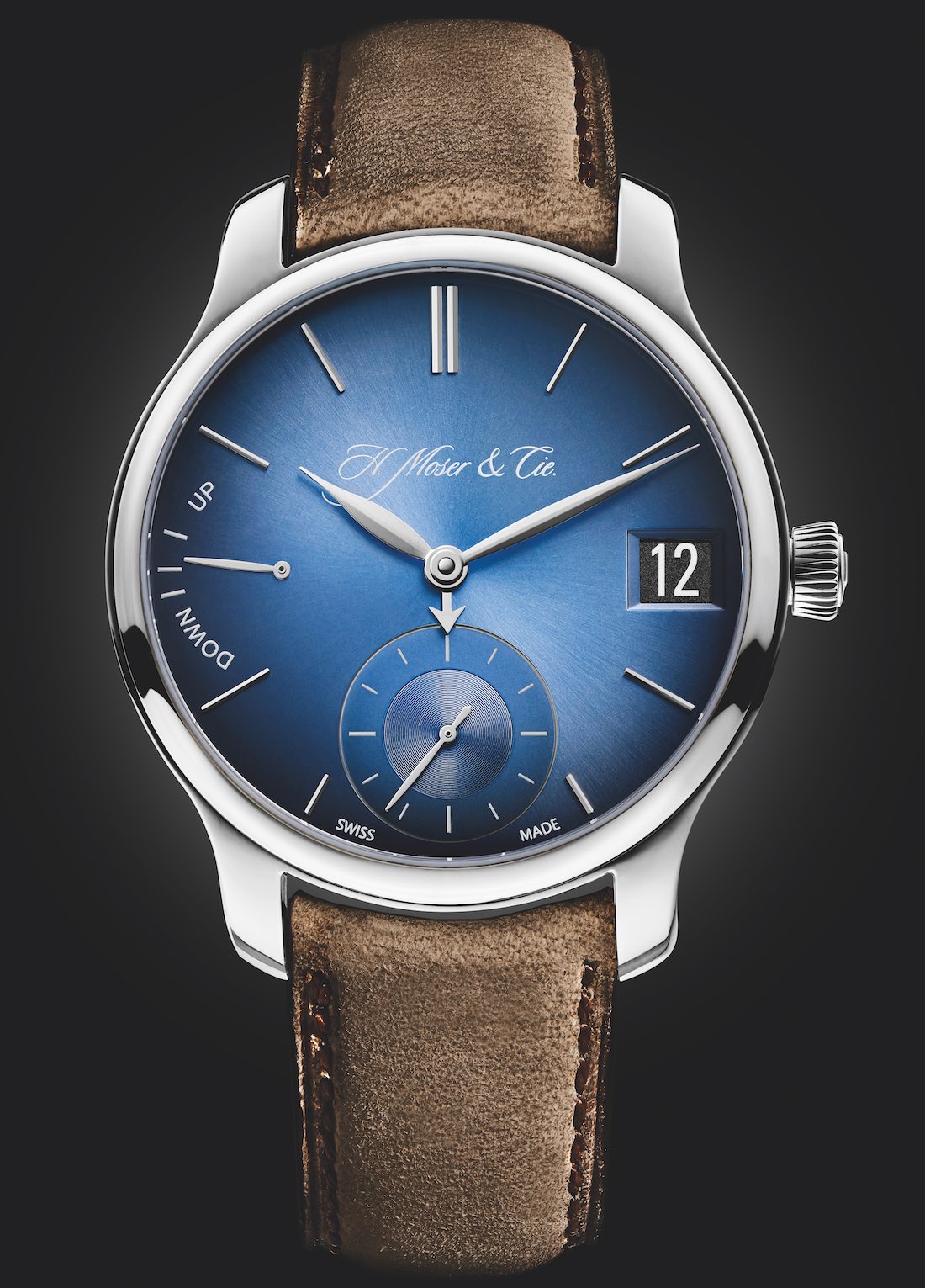
All this taken into account and yet, probably the most impressive feature remains how such immense complexity can come together and result in such a remarkably clean display and user-friendly functionality. With added, though invisible features, such as forwards and backwards adjustability (a unique feat on perpetual calendars), instantaneous change of the date at midnight, or a double-pull crown that ensures ease in adjusting the time or date, the H. Moser & Cie. perpetual calendar makes for some of the rarest and most unique-looking timepieces with this complication.
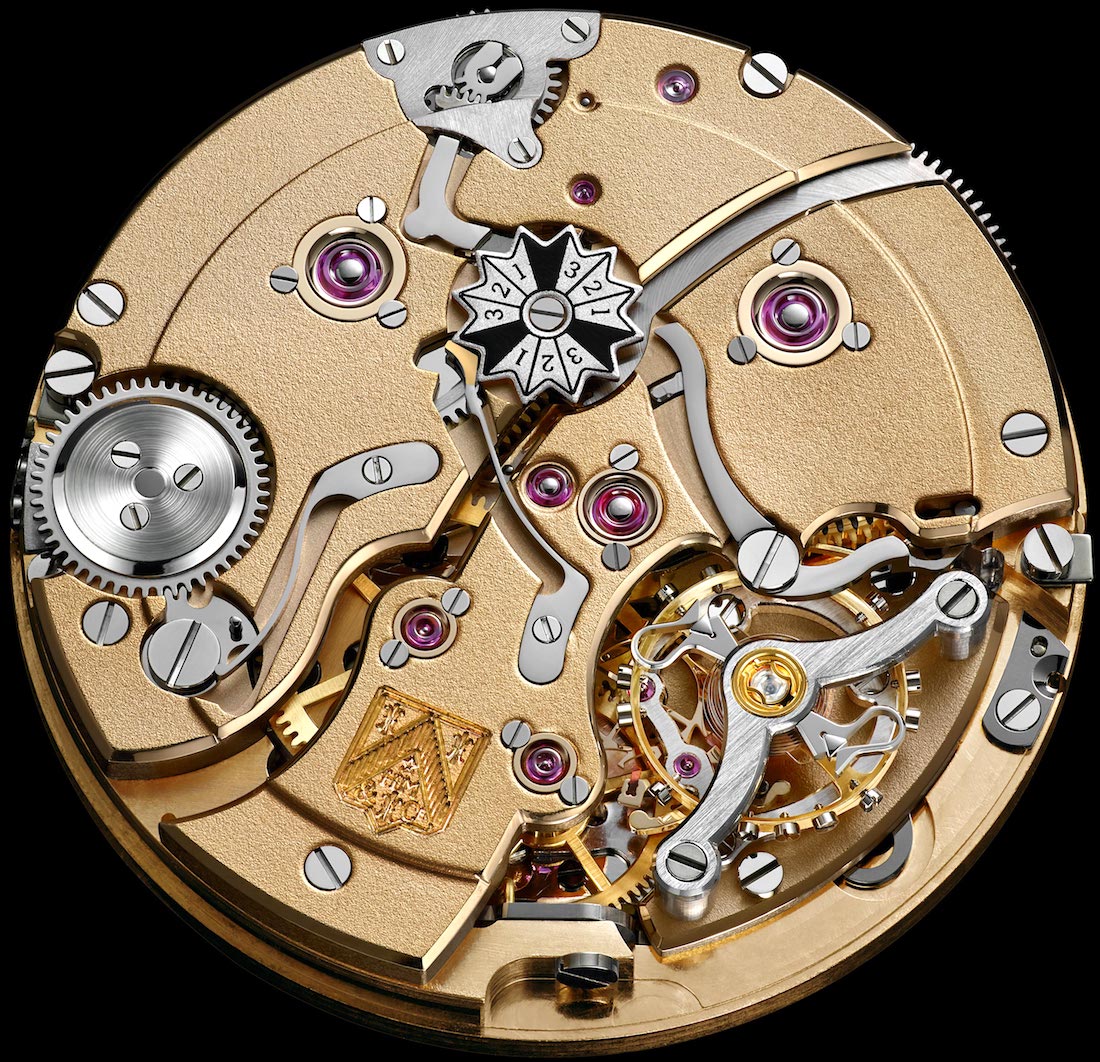
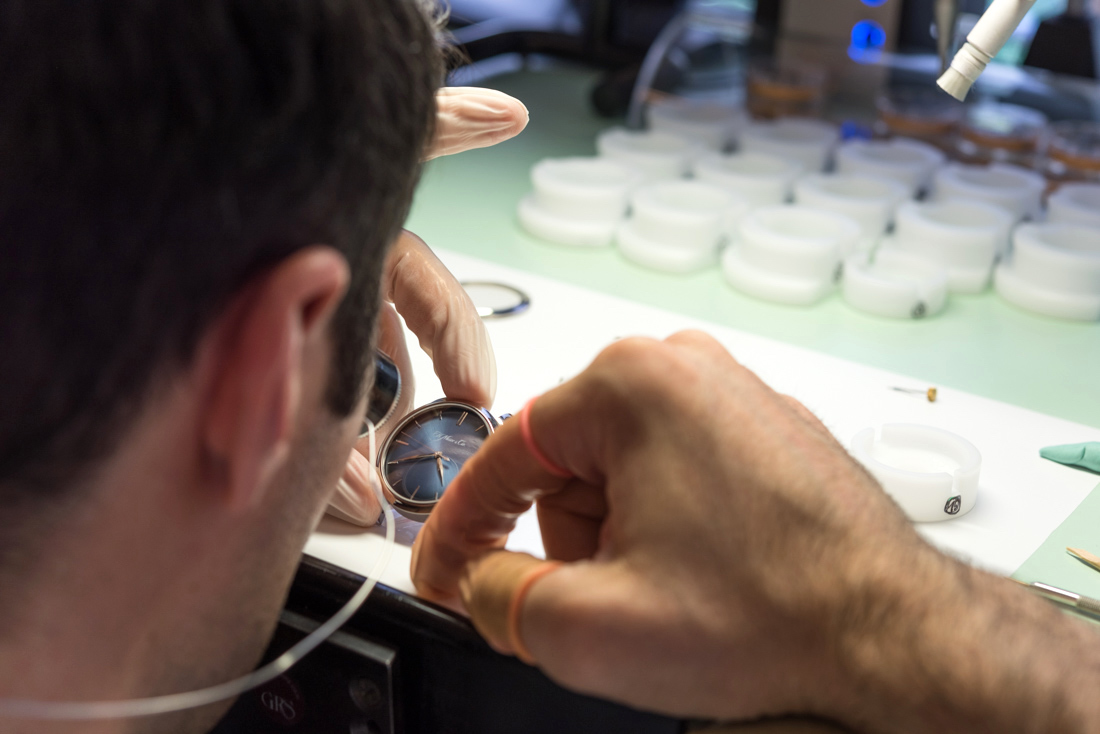
From in-house produced balance springs, wheels, and a wide range of other components through in-house research and development all the way to an intelligent approach to full assembly and challenging complications, we can say that the H. Moser & Cie. manufacture puts not only its heart and soul, but also know-how and daring fascination into producing every very rare watch that leaves the manufacture. h-moser.com


